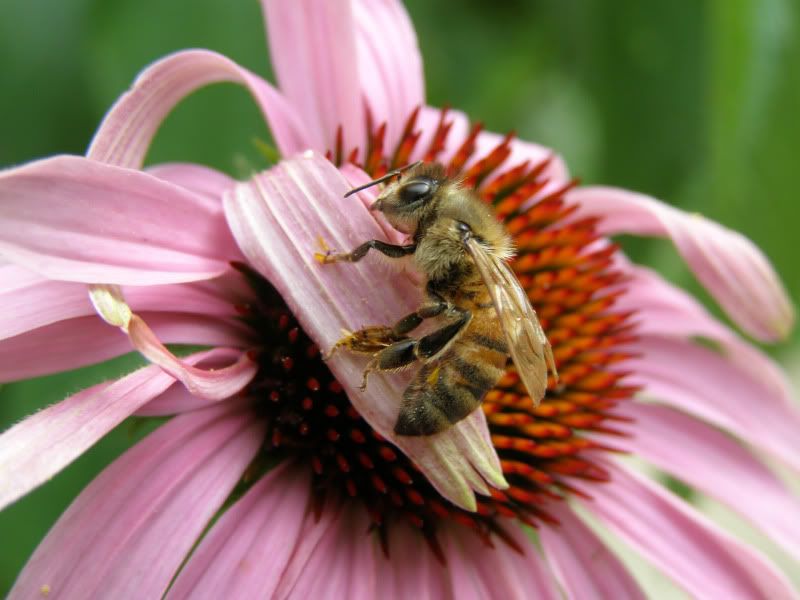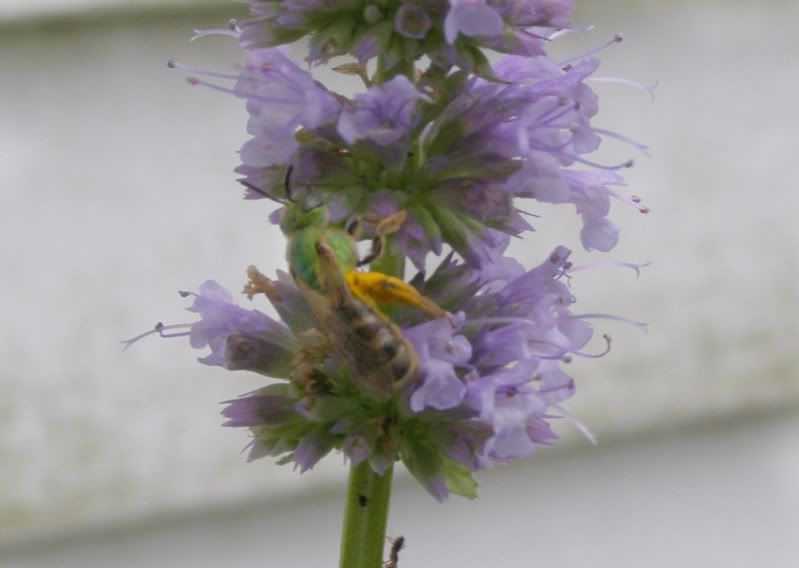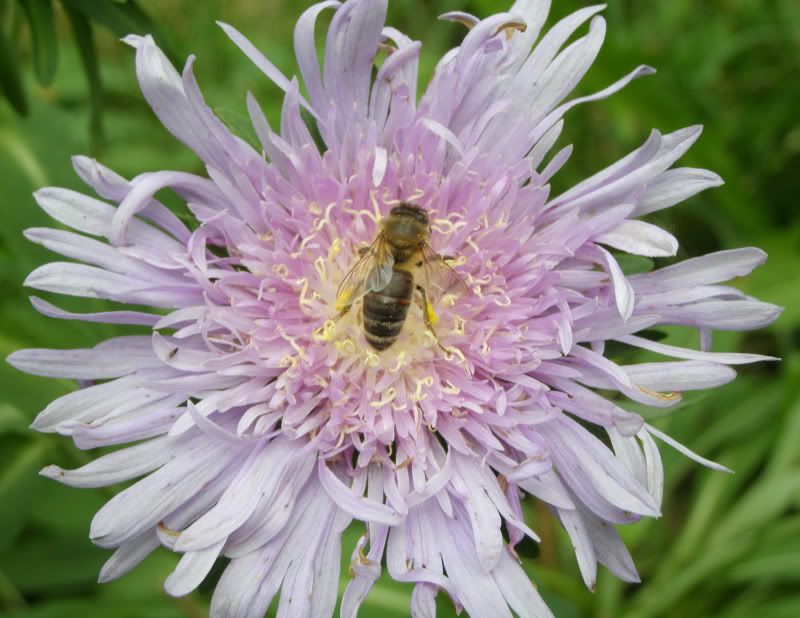
One of my pictures has been featured on the front page of Wildlife Gardeners, which is a forum I recently joined. It will be up there for the entire month of July (2009) I believe.
Here you see a honey bee landed oddly on a purple coneflower, Echinacea purpurea. Compared with other prairie plants these usually don't get as much attention by bees. That all changes when you have a few healthy plants growing a fair number of flowers, meaning more than just 4. Here are some more recent pictures I took out in the garden.

A sweat bee, which I'm not familiar with on the waxy flowers of a young Milkweed plant. Asclepias tuberosa has some of the showiest colored flowers of all the milkweeds. This one has been growing in the blueberry patch I planted last year. I should probably move it but the garden is otherwise full at the moment.

Another sweat bee, this time a metallic green one, working an unknown Hyssop I planted two years ago. It's taller than the Anise Hyssop, Agastache foeniculum, that all the other beekeepers prize, and it doesn't get as much attention. The metallic green sweat bees have always fasinated me. Sweat bees are semi social, meaning they may nest in colonies but new queens and males are produced all year long. So it's possable to find them living as solitary bees and social bees.

A Bumblebee working the Coreopsis I planted this year. I'm enjoying Coreopsis a lot as I think they bloom earlier than most other plants out in the garden. I've been in a real need to plug a hole or two with what's in bloom over the year. For mid to late spring there is almost nothing outside blooming. Hopefully the Coreopsis will help.

Honey Bee working Stoke's Aster. This plant is an example of a misleading common name. Though in the Aster family it is not in the Aster genus. It's actually in it's own genus called Stokesia, species name laevis. It's native to the south east united states but is heardy to grow up here in NJ.